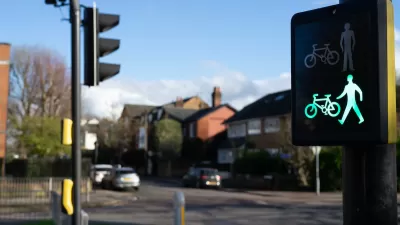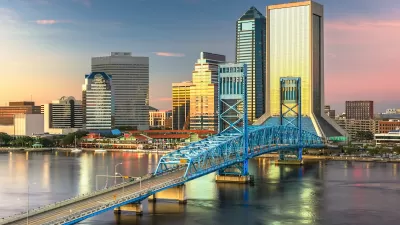A recent study emphasizes the importance of good road design and low speed limits in keeping pedestrians safe.

A new study of traffic deaths in Tennessee found a strong correlation between more pedestrian deaths and more crashes on “straight, multi-lane roads with speed limits over 35 miles per hour,” known as ‘stroads,’ that advocates say “combine the features of neighborhood streets with a car-oriented roads to deadly effect.” Kea Wilson describes the study in Streetsblog USA.
The study’s authors acknowledge that the size of vehicles can also be a factor in how deadly crashes are, “But the more important thing that we should be focusing on — and it's something that urban transportation professionals have a lot more control over — is speed on urban arterials.”
The study notes that Tennessee did not necessarily build more arterials during the time span that pedestrian deaths rose, but study author Christopher Cherry “suspects that a rising number of residents simply have no choice but to walk on the state's most-dangerous roads, particularly as incomes fall and poor residents who can't afford cars are pushed out of walkable downtowns and towards the sprawling fringe.” In other words, the suburbanization of poverty is putting more low-income people in harm’s way.
For Cherry, road design is a crucial key to improving safety. “We need to design roads where it’s almost impossible to kill someone.”
FULL STORY: Study: Yes, SUVs Are Deadlier Than Cars — But on Fast Arterials, Pedestrians Die No Matter What

Planetizen Federal Action Tracker
A weekly monitor of how Trump’s orders and actions are impacting planners and planning in America.

Congressman Proposes Bill to Rename DC Metro “Trump Train”
The Make Autorail Great Again Act would withhold federal funding to the system until the Washington Metropolitan Area Transit Authority (WMATA), rebrands as the Washington Metropolitan Authority for Greater Access (WMAGA).

The Simple Legislative Tool Transforming Vacant Downtowns
In California, Michigan and Georgia, an easy win is bringing dollars — and delight — back to city centers.

The States Losing Rural Delivery Rooms at an Alarming Pace
In some states, as few as 9% of rural hospitals still deliver babies. As a result, rising pre-term births, no adequate pre-term care and harrowing close calls are a growing reality.

The Small South Asian Republic Going all in on EVs
Thanks to one simple policy change less than five years ago, 65% of new cars in this Himalayan country are now electric.

DC Backpedals on Bike Lane Protection, Swaps Barriers for Paint
Citing aesthetic concerns, the city is removing the concrete barriers and flexposts that once separated Arizona Avenue cyclists from motor vehicles.
Urban Design for Planners 1: Software Tools
This six-course series explores essential urban design concepts using open source software and equips planners with the tools they need to participate fully in the urban design process.
Planning for Universal Design
Learn the tools for implementing Universal Design in planning regulations.
Smith Gee Studio
City of Charlotte
City of Camden Redevelopment Agency
City of Astoria
Transportation Research & Education Center (TREC) at Portland State University
US High Speed Rail Association
City of Camden Redevelopment Agency
Municipality of Princeton (NJ)





























